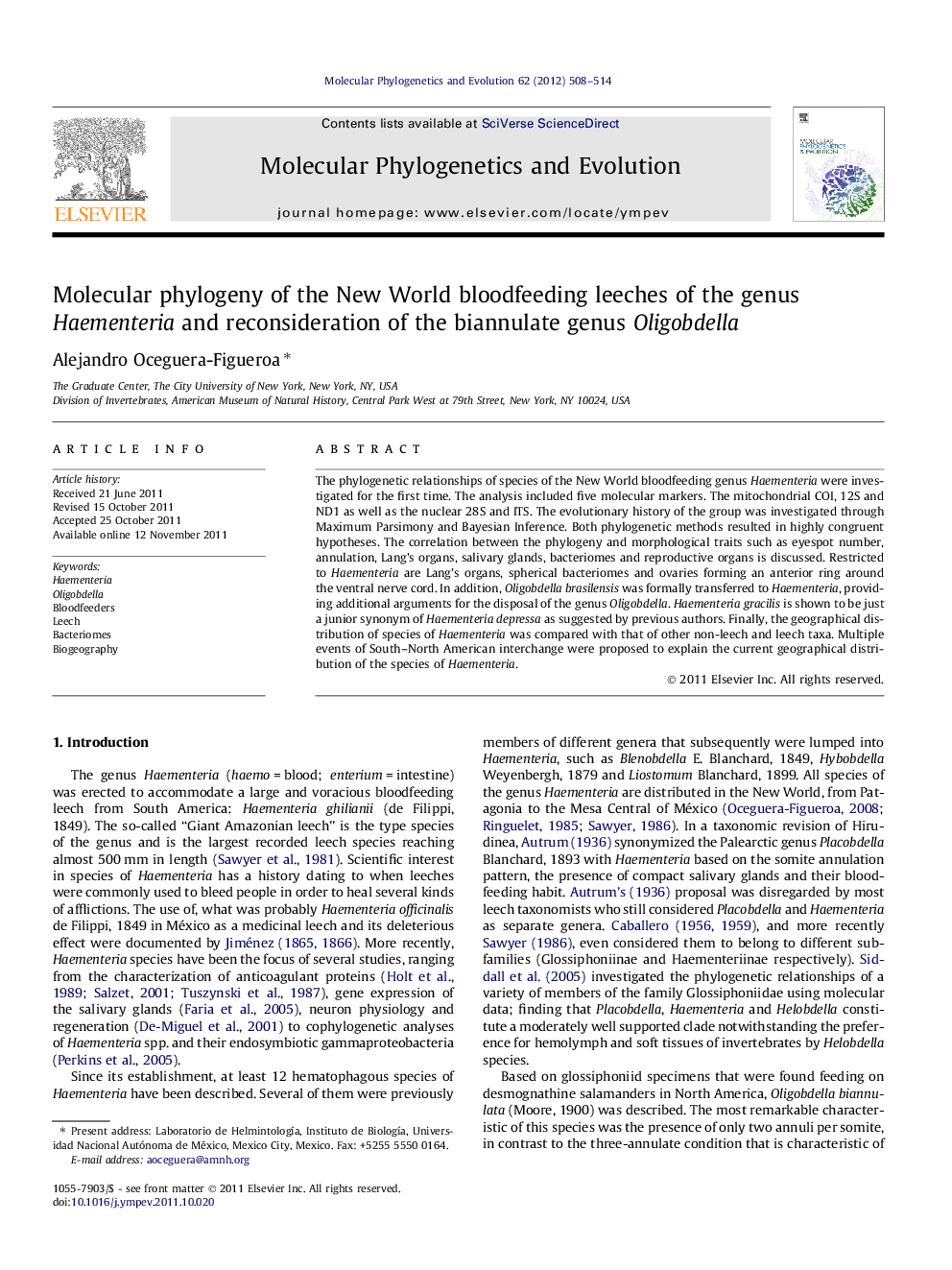| Article ID | Journal | Published Year | Pages | File Type |
|---|---|---|---|---|
| 5920403 | Molecular Phylogenetics and Evolution | 2012 | 7 Pages |
The phylogenetic relationships of species of the New World bloodfeeding genus Haementeria were investigated for the first time. The analysis included five molecular markers. The mitochondrial COI, 12S and ND1 as well as the nuclear 28S and ITS. The evolutionary history of the group was investigated through Maximum Parsimony and Bayesian Inference. Both phylogenetic methods resulted in highly congruent hypotheses. The correlation between the phylogeny and morphological traits such as eyespot number, annulation, Lang's organs, salivary glands, bacteriomes and reproductive organs is discussed. Restricted to Haementeria are Lang's organs, spherical bacteriomes and ovaries forming an anterior ring around the ventral nerve cord. In addition, Oligobdella brasilensis was formally transferred to Haementeria, providing additional arguments for the disposal of the genus Oligobdella. Haementeria gracilis is shown to be just a junior synonym of Haementeria depressa as suggested by previous authors. Finally, the geographical distribution of species of Haementeria was compared with that of other non-leech and leech taxa. Multiple events of South-North American interchange were proposed to explain the current geographical distribution of the species of Haementeria.
Graphical abstractDownload full-size imageHighlights⺠New World bloodfeeding leeches (Haementeria) form a monophyletic group. ⺠Multiple events of colonization explain the distribution of the species. ⺠Biannulate somites appeared in two different groups of leeches. ⺠The genus Haementeria should be expanded to include biannulate species.
